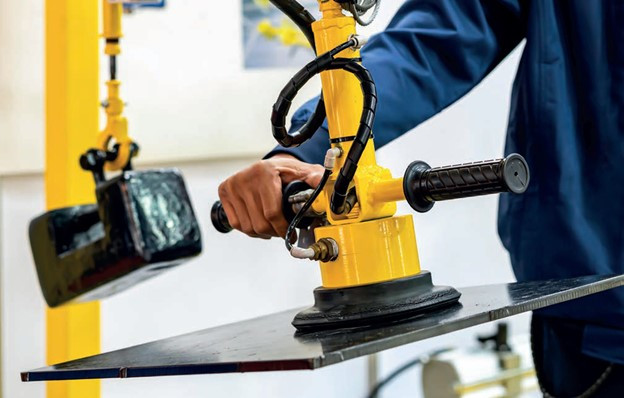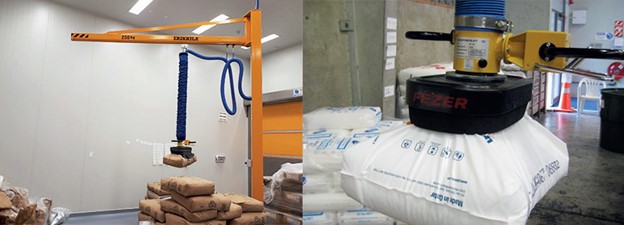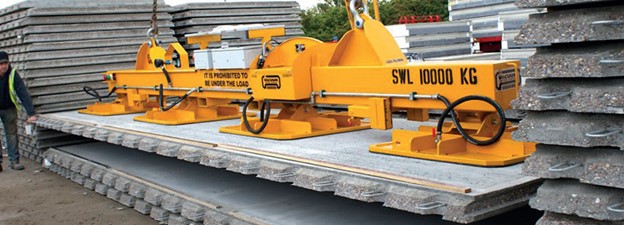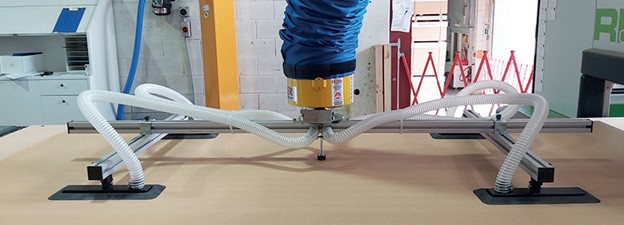Vacuum lifters: Suck it up
9 January 2024Matthew Prestidge, general manager/director at Stratalign, makes the case for vacuum lifters.
What is the best way to move an item from point A to point B? The answer could be to just suck it up. A modern innovation, vacuum lifters have become the go-to piece of lifting equipment in many warehouses, factories and distribution centres across New Zealand. The reasons are many and varied, as vacuum lifters can make lifting and shifting loads a more efficient, simple, gentle and safe process.
In this guide we’ll walk you through all you need to know about vacuum lifters: what they are, how they work, and why your business could benefit from them.
WHAT IS A VACUUM LIFTER?
The clue is in the name: a vacuum lifter is a machine that uses a low-pressure vacuum – like the one created when you place your hand over the nozzle of a vacuum cleaner – to lift and shift heavy items around a workspace.
Vacuum lifters feature large suction pads (either single or a series on a beam or frame) that are attached to flexible tubes which deliver the vacuum. Vacuum lifters can achieve a particularly strong grip without the need for straps and other conventional rigging equipment. Once the load is secured to the suction pads, the operator uses a control panel to lift and shift.
Many will assume that vacuum lifters can only be used on items with perfectly flat, perfectly smooth surfaces, like glass – but that’s not the case at all. By changing the type of suction pad at the end of the vacuum tube, you can pick up all manner of materials: concrete slabs, cardboard boxes, plastic bags, even the curved surfaces of barrels and kegs.
BENEFITS OF VACUUM LIFTERS
Vacuum lifting equipment represents a very different approach to lifting, and therefore brings a wealth of unique benefits when compared to traditional crane and hoist set-ups.
- Efficiency: No chains, hooks, straps or ties – vacuum suction lifters are the quickest way to lift and shift heavy items. The process couldn’t be simpler: attaching the lifter to the load is a matter of hovering near it, at which point it is ready to be picked up. A single operator can then use the controls to lift and move the load. Releasing the load is a simple matter of breaking the seal that the suction pad has when the item has been placed in position or lowered. The efficiency of this process can lead to far greater productivity within your factory or warehouse.
- Safety: Vacuum lifters reduce manual labour, which in turn increases safety. They are reliable pieces of lifting equipment that largely eliminate manual handling and lifting issues.
- Strength: While using an absence of air to lift heavy items might not sound the most sturdy of strategies, vacuum lifters are powerful pieces of lifting equipment. They are ideal for moving particularly dense and heavy items like concrete and metal.
- Minimal damage: Traditional lifting equipment relies on straps, hooks and chains to cradle or grab an item and lift it. This is a time-consuming process, and if those straps are positioned incorrectly there’s a chance that the load will tip or come loose, or that the item you pick up will be damaged under its own weight.
A vacuum lifter essentially removes the opportunity for damage by doing away with rigging equipment. In a way the load picks itself up, held to the vacuum lifter by the area within the suction pad.
TYPES OF VACUUM LIFTERS
At Stratalign we offer two main types of vacuum lifters:
- Battery-powered: Self-powered vacuum lifters are portable, able to be placed on castors, used with a crane or forklift and moved around your factory or warehouse. These vacuum lifters are self-contained and ideal for ad hoc lifts. They are capable of lifting up to 50t and can come with any number of features and functions.
- Tube lifters: An ideal lifting solution in warehouses and factories that have repetitive lifting demands, tube lifters are permanently installed pieces of equipment that are ideal for moving products such as cardboard boxes, drums, plates and lifting sacks. Tube lifters can generally handle up to 200kg, and offer a simple, efficient, cost-effective and ergonomic way to handle regular lifts.
VACUUM LIFTER APPLICATIONS
Whether a vacuum lifter is the right piece of lifting equipment for you will depend on what you plan to use it for, so let’s take a look at a few examples. Vacuum lifting equipment can be a perfect choice in the following lifting applications:
- Moving heavy materials: Vacuum lifters are uniquely powerful and gentle. Stratalign vacuum lifters are capable of lifting up to 50t while avoiding the rigging that increases the chances of product damage. This makes vacuum lifting equipment popular for businesses that deal in bulk heavy materials such as concrete, metal and glass.
- Repetitive lifts in a high pace environment: Built to deliver goods, factories and production lines must maximise their efficiency. Vacuum lifters are a great way to do just that, as huge amounts of time can be saved that would usually be spent securing the load. Simply hover the suction pad near the item and it will secure itself.
- Handling fragile items: Vacuum lifters are more gentle on the items they move. This makes them ideal for handling fragile items and materials, from glass to food, to lightweight prefabricated products.
Vacuum lifting equipment is a unique technology that has the potential to transform a wide variety of businesses. Understanding whether a vacuum lifter is right for you is about understanding the technology.




